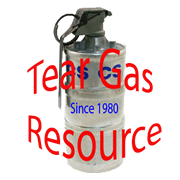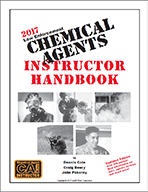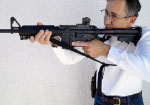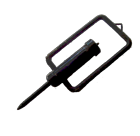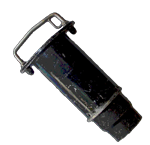Decontaminating an area after the use of non-lethal chemical agents is an often over looked procedure. Most tactical units arrive, see the problem and conquer. More times than not, tear gas was used in the conquest. Left behind in a crowd control situation is chemical residue and empty containers. In most agencies the tired heroes now leave the scene. If they are a progressive unit they have a "hot wash" (debriefing immediately after an event) before they leave. During this debriefing the team leaders should make sure that all the empty containers were policed-up.
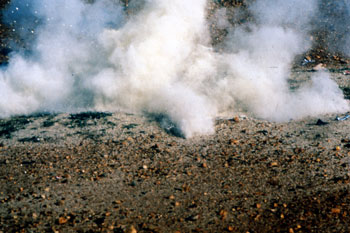 Cleaning up behind them is the last thing on their minds.
However, a few simple actions by them could save your agency a great deal of money in post operation civil claims. Pick-up and take with you any ordinance expended. Don't leave anything behind that an innocent person may pick up and injure themselves with. This will also prevent further contamination of the area if your ordinance didn't totally expend its load upon deployment. Someone should be assigned to follow-up on decontaminating the area. As with indoor decontamination the fire department can be a big help.
Cleaning up behind them is the last thing on their minds.
However, a few simple actions by them could save your agency a great deal of money in post operation civil claims. Pick-up and take with you any ordinance expended. Don't leave anything behind that an innocent person may pick up and injure themselves with. This will also prevent further contamination of the area if your ordinance didn't totally expend its load upon deployment. Someone should be assigned to follow-up on decontaminating the area. As with indoor decontamination the fire department can be a big help.
Each type of non-lethal chemical agent has its own unique cleanup process. Some chemicals can be neutralized and some not. The most common chemicals now being used in law enforcement are Cn (Chloracetophenone), CS (Orthochlorbenzalmalononitrile) and OC (tincture of oleoresin capsicum). The saturation accomplished by the use of the tear gas varies with the type of carrying agent used. When powder (blast dispersion) is used it falls from the air faster than when smoke is used as a carrier. It leaves a great deal of residual contaminated powder on the ground. If it is left on the ground the next person to kick the powder up will be contaminated.
Tear gas is nothing more than a solid chemical or particle that becomes airborne and lands on a person's skin and is breathed into their respiratory system. Decontamination procedures are based on this principle. Once we remove all the particles of chemical the physiological effects of the tear gas should cease. In most cases the psychological effects will cease with the physiological effects. If you keep the agent away from your eyes and respitory system you will have no effects outdoors.
physiological effects of the tear gas should cease. In most cases the psychological effects will cease with the physiological effects. If you keep the agent away from your eyes and respitory system you will have no effects outdoors.
In Crowd Control scenarios........
Severely contaminated clothing should be removed as soon as practical. This clothing should not be mixed with other wash. The contaminated person may shower to remove any residual agent on his/her skin. During this process no oil based soap should be used. The oil in the soaps may trap chemical against the skin. Theoretically this could cause skin burns. Much soap such as Borax, Ivory, Lava and tincture of green soap are available with no oils in them. No oils, creams or salves should be used in the personal decontamination process. These also will trap the chemical against the skin. (See personal decontamination article)
Major decontamination is usually not needed outdoors. If a blast dispersion type grenade leaves a large amount of residue the area can be hosed down. The chemical can be sprayed with an MEA solution and allowed to sit for at least 10 minutes before rinsing the area.
CN - Rarely used outdoors because CS is 12 times more effective.
CS - Breaks down in water quickly. Simply wash it down the drain.
OC - All Natural and Biodegradable. Again wash it down the drain.
